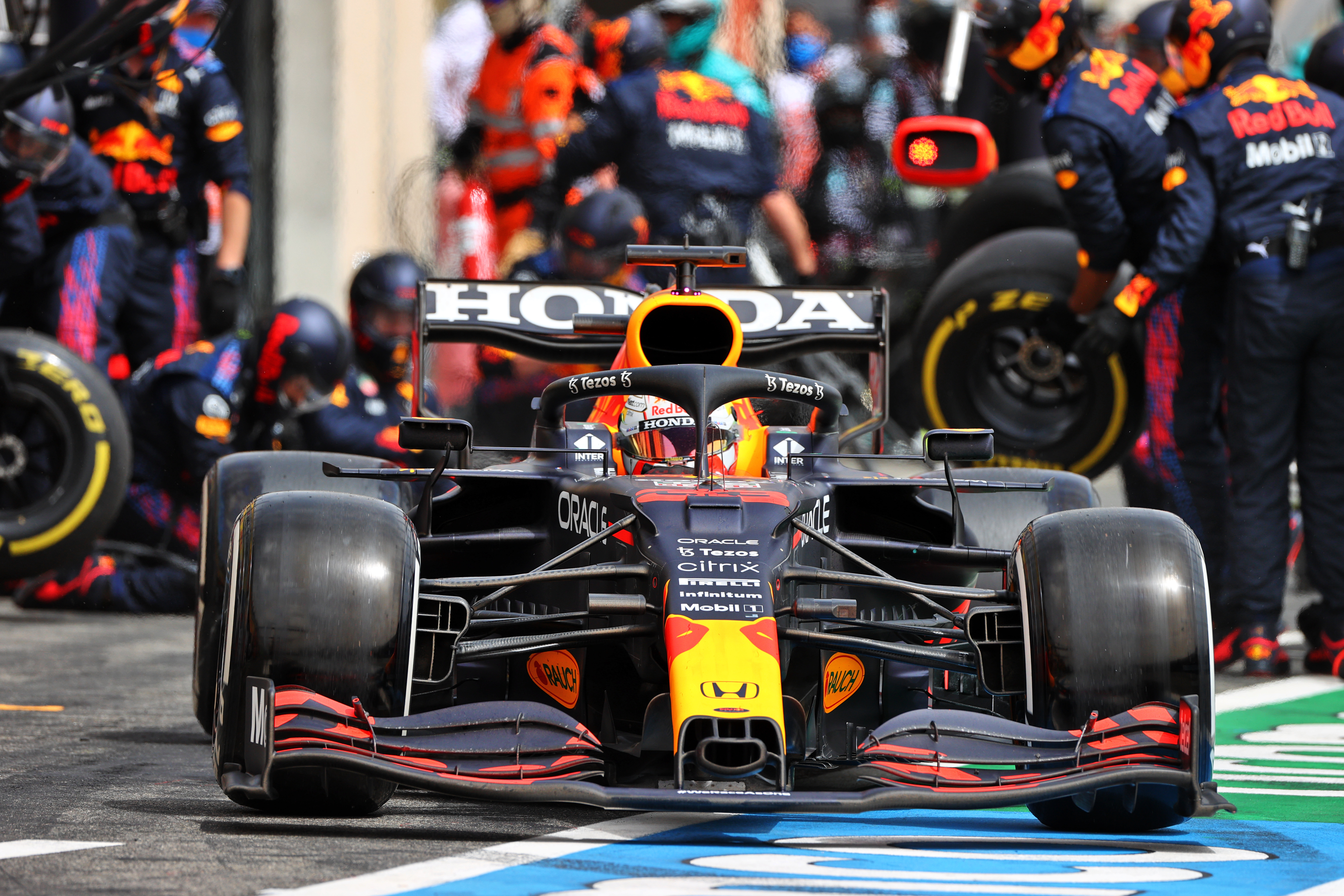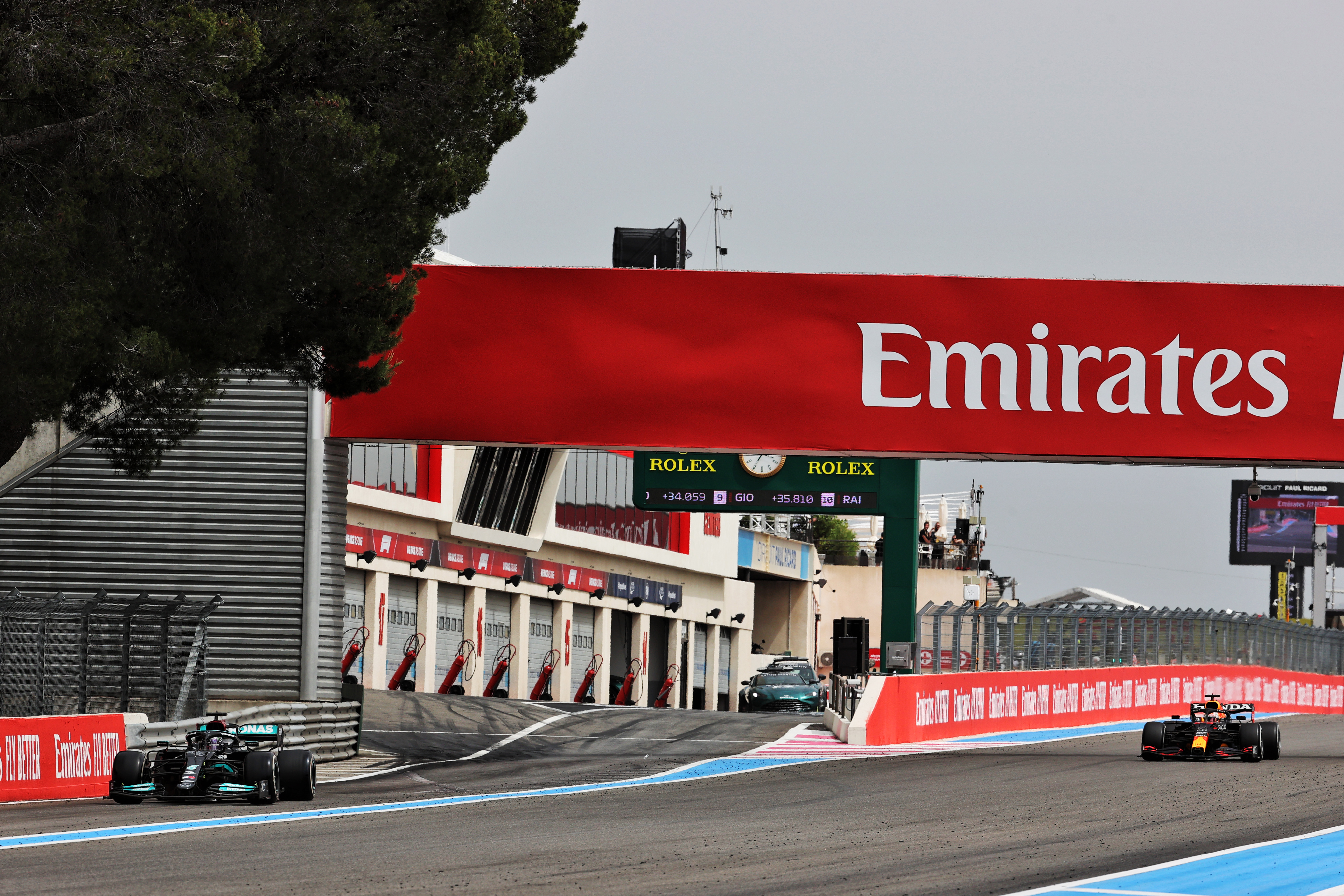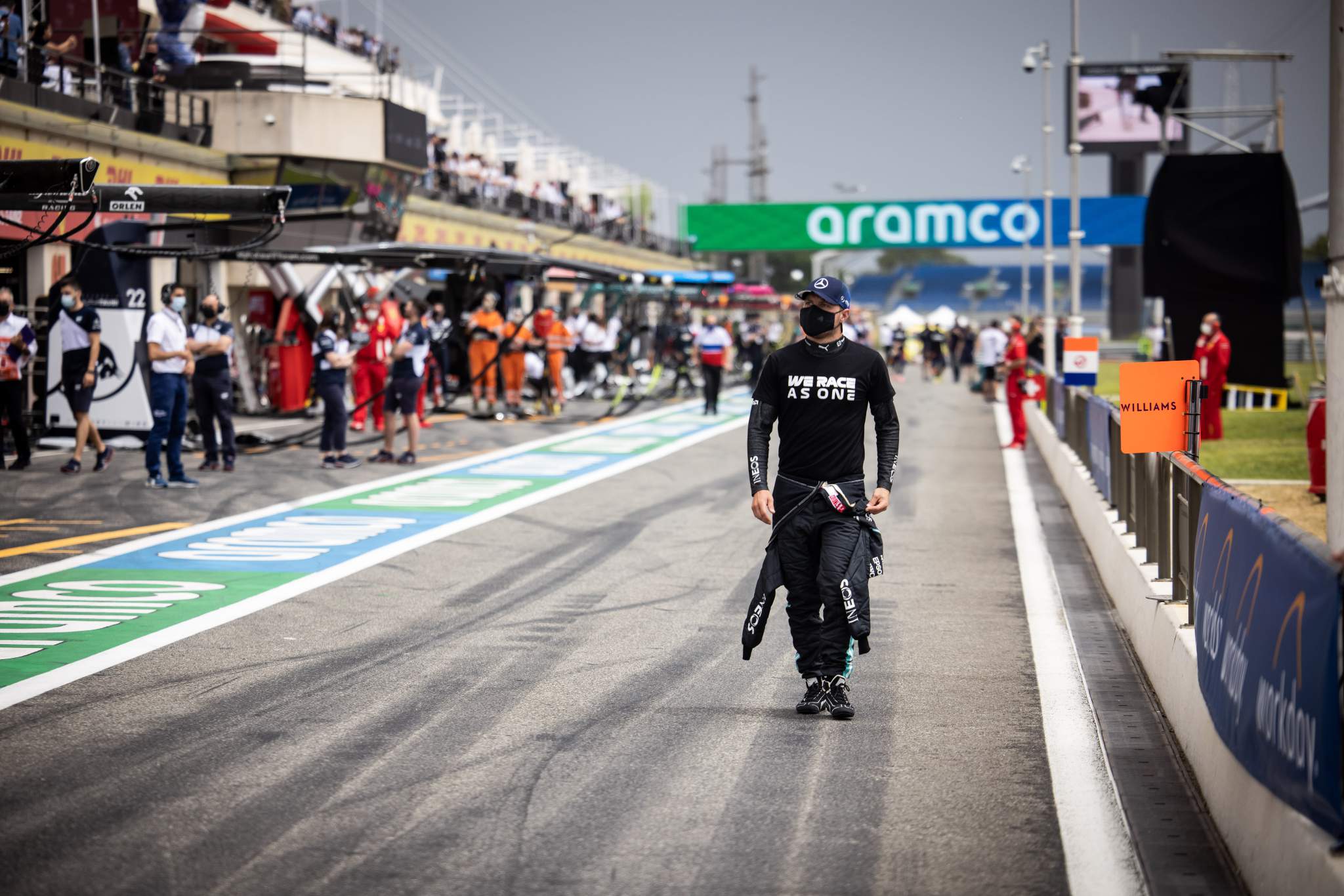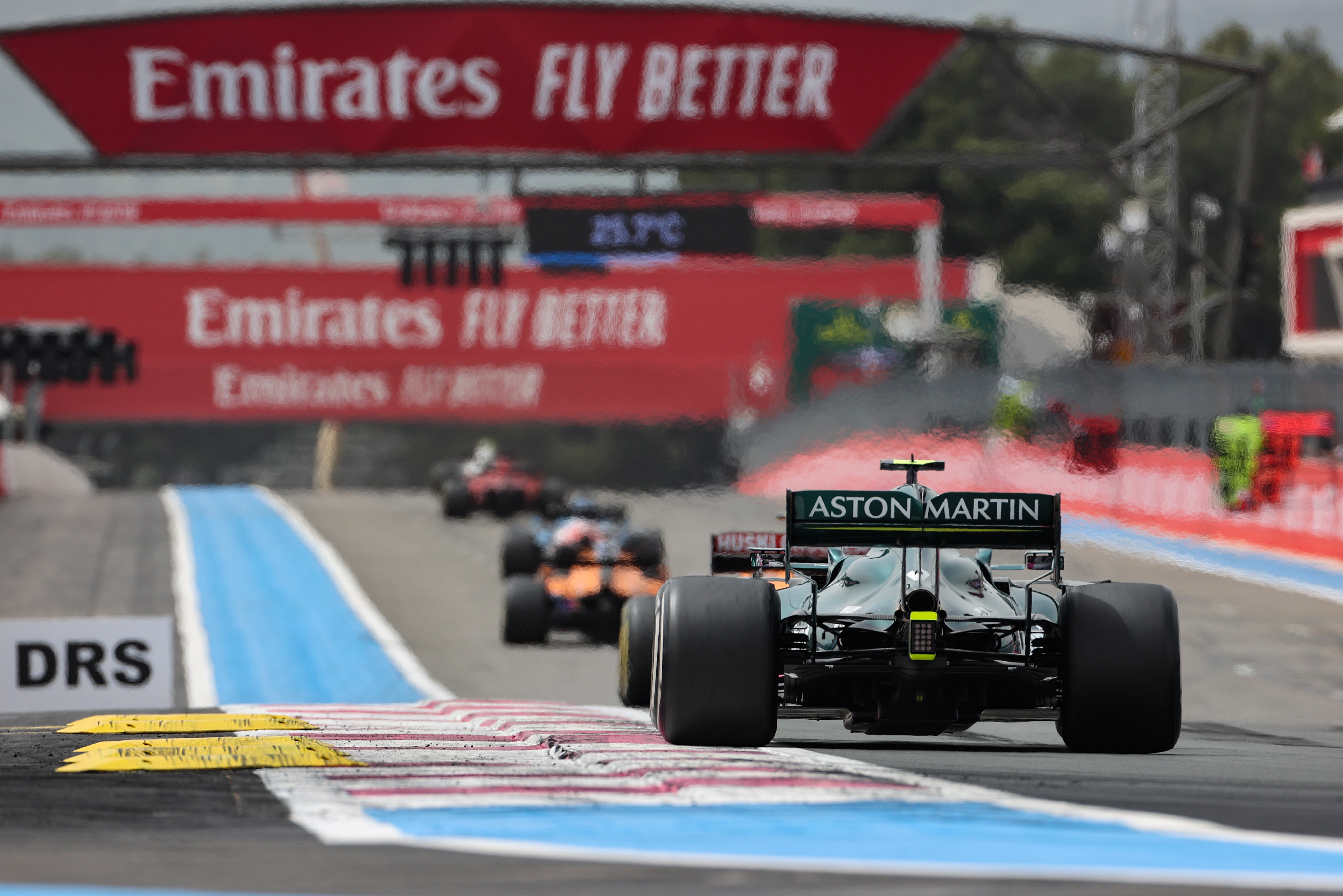Up Next

From lap one to one from the end you couldn’t call this one: Max Verstappen or Lewis Hamilton. At Paul Ricard of all places, Formula 1 gave us a tense thriller.
The time of pitwall nerve in this epic contest was in that mid-way phase when it became clear that the pre-race, track-cleansing rain had made the track very abrasive. Tough enough on the front tyres to bring a two-stop most definitely onto the radar.
But if you’re Red Bull and Verstappen, having undercut your way to the front at the first stops (after losing the lead with a wobble onto the run-off at the first corner), do you dare surrender that lead?
It was Max who’d first suggested that the victory might not actually be as nailed-on as it had looked ever since he’d driven a great out-lap to completely ambush an errant Mercedes to leapfrog Hamilton at the first – and what were supposed the be the only – stops.
As he continued to set a hard pace and Hamilton went with him every inch of the way, Verstappen advised, “We cannot keep this up to the end of the race.”
This message was relayed by Mercedes to the closely-following Hamilton, who replied: “I agree. Let’s make sure we undercut them.”
Let’s repeat Barcelona in other words, he was suggesting – or Hungary 2019. But the Mercedes pitwall wasn’t so sure – for reasons we’ll get to later.
And Red Bull was feeling a whole lot more confident than in either of those two races back when it wasn’t convinced it would have had the pace to claw back the pitstop loss if it had pitted and Hamilton had stayed out.
This time it absolutely was – because around here the Red Bull was no longer disadvantaged by its tyre usage. The tyre challenge here wasn’t rear heat degradation, but front graining – and it applied to everyone pretty much equally.
The car was also in a very sweet spot with its lower wing level, the underbody contributing a lot more to the total than on the Mercedes. The particular demands of the track meant its spoon wing was ideal.
Mercedes, by contrast, did the simulation sums and found it would have lost more in the turns than gained down the straights if it used its lower available wing. It didn’t have the ideal choice for the track and tyres and Red Bull, whether by chance or cleverness, did. So for once the Red Bull was faster down the straights. Fresh Honda engines certainly didn’t hurt either.
“We don’t fully understand why our models were telling us that we would have been OK” :: Andrew Shovlin
But still, that strong Mistral tailwind and the Red Bull’s skinnier wing combined to tank-slap Verstappen out of the lead and onto the Turn 1 run-off seconds after the start. Hamilton gladly took the present and out-front like that was able to give the Mercedes’ vulnerable front tyres an easier time than was the following Verstappen.
Hamilton looked comfortable there, 3.2s in front by the time Mercedes used Valtteri Bottas to apply the undercut challenge to Verstappen on lap 17, to keep him off Hamilton’s back.
With a 3.2s lead, Mercedes didn’t even feel the need to stop Hamilton the lap after Bottas – ie the lap when Verstappen came in – but the lap after that. This was the decision which, when you trace it all back, lost Hamilton the race.

Verstappen’s in-lap was 0.6s faster than Hamilton’s would subsequently be, his pitstop loss was 0.4s less and Verstappen did a great out-lap (but only around 0.3s faster than Bottas’s had been). The Red Bull can still instantly switch on even the hard tyre, which the Mercedes still struggles to do.
But even all those things combined don’t add up to those 3.2s Hamilton had been leading by before Verstappen pitted. So where was the missing time? The undercut was massive. Way bigger than Bottas had found on Verstappen the lap before (which was around 1.1s).
“Even now [post-race], we don’t fully understand why our models were telling us that we would have been OK,” said Andrew Shovlin. “So clearly there is something we need to go off and understand there.”

“Verstappen should be 1.5 behind,” came the calm radio message to Hamilton as he trundled down the pitlane on the speed limiter. He wasn’t. As Hamilton exited just before the first turn, the Red Bull was alongside and travelling a lot faster. And in front. “Don’t know what just happened there, mate,” said an apologetic Pete Bonnington to Hamilton.
That’s where Mercedes and Hamilton lost the race. It may have been retrievable later, when that two-stop prospect suddenly became real as everyone realised that even the hard-compound tyres were graining. Had Mercedes been braver as the hards began to drop away – as Hamilton was encouraging it to be – it may have been able to steal it back. But maybe not. Because Sergio Perez…
There’s no reason to assume that a braver Mercedes call would definitely have led to a Hamilton victory
Checo had not liked the feel of the low-winged car when combined with the strong gusty wind of race day and had immediately fallen away from the lead trio, though was comfortably fast enough to leave the best-of-the rest contest far behind. But that gentle pace had not endangered his one-stop plan, had enabled him to keep the tyres in great shape and run long.
He finally came in on the 24th lap and rejoined on a set of hards seven laps newer than Bottas’s were by now. He was always in the pitstop window of the Mercedes and so was the main reason the team didn’t feel able to anticipate Verstappen making a second stop.
Had it done so and Verstappen had stayed out, Hamilton would have needed to make back the 24s loss of a pitstop on mediums that were a slower tyre than the hard and after negotiating a way around Perez. He’d have needed to nail these delicate tyres, which had already proven to be liable to grain, and still have a lot more grip than Verstappen by the time he arrived on his tail.
When Red Bull made that call after a stint of just 14 laps on the hards, Verstappen was faced with that exact same challenge described above and would have to find a way by Bottas – which he did fairly effortlessly, given that he was lapping around 2s faster as he caught him.
Even then, Verstappen only just managed to make the gamble work. So there’s no reason to assume that a braver Mercedes call would definitely have led to a Hamilton victory.
Conversely, if it had allowed Bottas his wishes to commit early to a second stop, it risked the strategy working for him at Hamilton’s expense! Costing the team’s world title contender valuable points.

Given how close this title battle looks set to be, Bottas seems de facto already in the support role to Hamilton’s bid. That and continued speculation about his seat for next year make his frustrated eruption over the radio more than understandable.
As soon as Verstappen made that second stop, Mercedes was committed to leaving Hamilton out. Verstappen exited 18s behind with 21 laps to go and initially lapping up to 2s faster. But then the graining phase hit.
Hamilton, urgently demanding updates, was in the midst of trying to eke out the tyres, like in Bahrain. For a time it looked like it was going to work for him and the gap stabilised around laps 44-46. It was on lap 47 that Hamilton’s front tyres fell of the cliff – and Verstappen resumed the hunt. With two laps to go he had him in DRS range and a lap later the kill came into the chicane, Hamilton powerless to defend it.
Just before that, Perez had made a pass on Bottas’s third place around the outside of Signes. The stewards were investigating whether he’d got all four wheels off track to make the pass – and hence Mercedes didn’t bring Bottas in for a new-tyred attack on the fastest lap point, just in case Perez was penalised. But he wasn’t.
Like that, Verstappen got the extra point to add to the 25 for his dramatic victory. Hamilton still didn’t quite understand what had happened at the first stops – and his team would begin investigating so as to give him some answers.
Well behind the Red Bull-Mercedes fight, Lando Norris was best of the rest with a great fifth place achieved through the McLaren’s great tyre usage (on a day when Ferrari’s was disastrous for reasons it doesn’t yet understand), some great moves through the pack and team-mate Daniel Ricciardo moving aside (having caused Norris to run onto the run-off on he opening lap).
After passing, Norris pulled out 10s on Ricciardo who held off Pierre Gasly and Fernando Alonso on the line in the sixth/seventh/eighth scrap. For the second weekend in succession Alonso had the edge on Esteban Ocon throughout.

Sebastian Vettel and Lance Stroll took the final points places for Aston Martin, the latter edging Carlos Sainz’s Ferrari out of the points, albeit five places ahead of team-mate Leclerc. George Russell still hasn’t scored a point for Williams but he certainly made one – finishing just behind Sainz and ahead of five faster cars.
“I’m sure if we look, with hindsight, for sure if we had stopped earlier, before they had stopped, come out ahead, and just gone onto a two-stop, we probably could have won the race,” said Hamilton, now 12 points behind.
“But it would have still been very difficult. Their pace was generally very, very strong. I was able to keep them at bay when he was behind me but if he had not made a mistake in Turn 1, they would have just led the race all the way, probably.”
This is a title fight for the ages.






